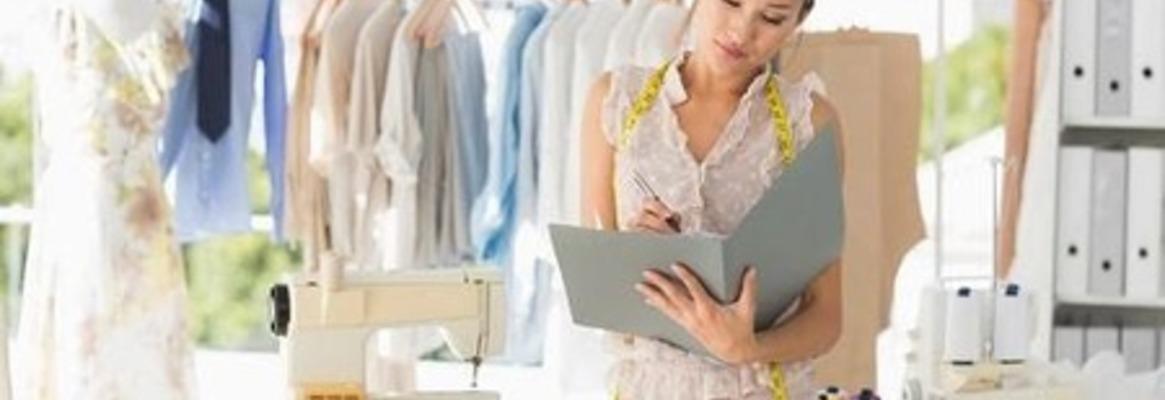Designing and manufacturing clothing is a multifaceted business. Once you’ve decided on the right business model and niche for your clothing line, you then must think about the garments themselves. Your first collection is important as it will be the launchpad to your fashion brand. It will reflect the core essence and values of your clothing line and properly introduce your unique aesthetic to the world. You can expand and explore new avenues as you grow, but your very first collection needs to preview what your audience can expect to see from you consistently as a designer. In saying that, it is not an easy task to find the best clothing manufacturer for your new business. Deciding on the right factory for your needs is vital to your success, so we have created 3 top tips to help you on your way.
Source your supplier wisely
You will first want to decide whether you wish to work with domestic manufacturers in the country or continent you live in, or with overseas manufacturers. When we reference overseas manufacturers, we are usually referring to countries like China, Hong Kong, or India. There are pros and cons of working with both domestic and overseas clothing manufactures, which revolve around issues of cost, communication and shipping. For example, when it comes to domestic clothing manufacturers, you’re more likely to receive higher quality products, with regulated labour standards. However, this comes at a cost; it will usually be more expensive to source your garments locally. Ultimately, you’ll want to choose the manufacturer who can provide you with the highest quality products for a price point that aligns with your current business funds as a small brand. You’ll want to find a manufacturer that can provide you with the fastest shipping times (depending on whether you’ve chosen a domestic or an overseas supplier). Furthermore, you’ll want to work with the manufacturer that has the most experience and good communication skills, so you can build a good relationship and ensure a smooth production.

Determine Minimum Order Quantities (MOQ)
As a small business, you will initially want to produce small runs for your brand. Specialist small- batch producers can produce much smaller runs than in previous years, and at the same time provide technical support from start to finish, even if your experience in the technicalities of textile manufacturing is somewhat limited.
Nowadays, clothing manufacturers understand the budget constraints small businesses have when entering the market and many cater to a range of requirements, outside of the standard pre-sets of yesteryear. Many factories will accept MOQs as low as 50 pieces, so even the smallest designer can undertake their first collection run. As a cautionary note, do check that these low MQQs won’t restrict or limit your production capabilities or place restrictions on the type of style you can produce.
Whilst it’s impossible to forecast exactly how much your business will grow, it may be important to choose a factory that could scale to your growth. Initially, this may not be a decisive factor in your decision making, however, if you expand expeditiously, choosing a manufacturer that can grow with you will be necessary for a smooth and uncomplicated transition to your growing brand.

Consider The Production Process
Do you want a factory to simply assemble fabric you’ve bought to a pattern you’ve designed, or do you want it to source materials, create a pattern and assemble it all from your sketch? If it is the former, then you will need a cut, make, trim (CMT) package. This tends to work best for designers who already have a line of products and have already been hand-making them on a small scale. These designers already know their choice of fabric, stitching and tools but are looking to produce larger quantities. If it is the latter, a full package production (FPP) could be the right choice for a designer with little or no garment-making or pattern-cutting skills. These factories will produce your product from start-to-finish. They cut and sew fabric, and attach the trimmings such as buttons, labels and so on. This package is inevitably more expensive but offers a means for every type of entrepreneur to get a have a slice of the fashion industry pie. Whichever type of factory you choose, working together collaboratively and cooperatively will ensure a good working relationship that will help you get the most of your production requirements for a reasonable cost.
To summarise, whilst it is always possible to change your choice of clothing manufacturer as you grow, putting in the research early on may mean you get to build a lasting relationship with one factory throughout your career as a fashion designer.
This article has not been edited by Fibre2Fashion staff and is re-published with permission from synzenbe.com







Comments